Peter Gell: Murray-Darling’s Wetlands
Updated with transcript: May 22, 2009
Welcome to Circle of Blue Radio’s series Five in 15, where we’re asking global thought leaders five questions in 15 minutes, more or less. These are experts in journalism, science, communications design, technology and water, and really everything in between. I’m J. Carl Ganter hosting this week.
Amid decades of political bickering about water rights and management in Australia, scientists are looking back in time to find ways to restore threatened river systems, and it is no secret that the Murray-Darling River Basin in southeast Australia is drying up. But researchers say that the basin started degrading as long ago as the 1800s. The situation is now dire, paleoecologist Peter Gell tells us, but it has a long history that can give us clues to its future. Gell is a professor at the University of Ballarat in Australia and studies the long-term history of the Murray-Darling’s wetlands. Circle of Blue reporter Nadya Ivanova spoke with him about his research.
Professor Gell, you’ve researched the long-term history of the basin, and, in fact, you’ve recently been back from a field trip there. Tell us about your work and what you found.
We took out 80 centimeters of sediment, and each of those layers has a swig of fossil diatoms in it, and you can slice that up and reconstruct the condition of that wetland over the time frame that is covered in the sediment core that you’ve taken. What we bring to particularly the Murray-Darling Basin are lessons of the past that are no longer accessible, because we have a rather questionable history in terms of understanding the degree to which Aboriginals used or manipulated their waterways, and even the European history is rather foggy because we have documentary evidence. We really can’t go back far enough in terms of anecdotal evidence, so that’s a fairly incomplete record of change as well, although it’s very complimentary to the techniques that we use. There is a good suite of historical documents. By and large, we can get a continuous record of change back centuries or thousands of years in the water quality history of any wetlands in which these sediments are accumulated. So when it comes to the understanding of wetlands and these systems, many people recall them to be of a particular condition in the 1970s or 1960s, and that tends to be adopted politically as the baseline condition. And in many instances what’s happened under the Ramsar process is that the listing has been of the condition of the wetland at the time of listing, where as we find as we go back a bit further, that in fact this wetland switched condition maybe in the late 1800s and in fact when it was listed on the Ramsar as people think this natural condition is in fact a degraded condition. So when you look at a database of these long-term records, you begin to see across the Murray-Darling Basin that in fact the condition of a lot of these wetlands is nothing like they appear today, and a lot of changes happened early on in settlement in Australia, and in fact we’ve lost a lot more than we actually think we have, when we can see what these wetlands were like in the 1700s and 1800s before we started degrading the catchments so much.
Your research goes against the grain of conventional thought and the political rhetoric in Australia. What response have science and your findings in particular — received?
Well, it affects the politicians as well as the scientists because the way a lot of research has gone on in Australia, perhaps to a degree in the Northern Hemisphere as well, is that these paleoecological approaches have pretty much come in late in the day in that there has been a lot of monitoring work over the years, and people develop a fairly strong opinion of what a particular wetland is naturally like. When you get up in forums or present to governments that in fact that wetland was never like that, that its natural condition is such and such, then you start upsetting a few people, upsetting the apple cart to a degree, and people try to adapt their opinions to the independent evidence that you are bringing up of the long-term record. An interesting response also is that people say that’s not particularly relevant anymore, because we can’t go back that far in time, and that’s of course a subjective opinion but it seems that people in many instances really are only willing to work on this established knowledge when managing these systems. I must say that there have been many encouraging and enthusiastic rural managers that we work with, in particular because they’re charged with the responsibility of managing some of these wetlands and they are in a very difficult situation in terms of deciding what these wetlands should be like. We have decentralized management of many of these wetlands, and they have been handed over to small community groups to decide how much water a wetland should get if there is any available, what time of year it should get it, how big the pig flood should be, what the water quality should be, and these sorts of things, and really they’re scrambling around in the dark because they don’t understand what it’s natural condition is and until they’re sort of faced with the responsibility of deciding how to manage a piece of natural state, they don’t realize how important a record of the past is. We are gradually plying into that sort of process evidence of what these wetlands are like, and that gives people some sort of idea as to whether it’s worth putting expensive water across a wetland or not. I think, it’s bringing a few other important issues to the forth, such as issues of sediment, salt, and now that these issues of acidification of these wetlands as well.
What degradation has the system gone throughout the centuries?
A lot of people think that the river Murray is in a magnificent condition. We’ve noted since the 1800s through 1900s that in fact it switched condition, and an important impact upon the river was the initial pulse of sediment into the system which turned a fairly clear water system into a turbid water system and turned it into plankton dominated system rather than one with rich beds of aquatic plants. So there has been an almost basin wide substantial step to change its natural function, and that’s a major consequence of early intensive grazing of sheep and cattle and the like across the catchment. The aquatic systems have already withstood a substantial impact, and they’re already to quite a degree degraded from what we’ve been seeing, systems that really aren’t up to par if you use the long-term record as the baseline. They have become degraded over the century sort of style, but now particularly post Second World War we’re seeing massive increased abstraction, as we do all around the world. And Australia, because it’s such a dry and variable climate, has a very high per capita level of reservoir capacity, although not particularly so in the present drought, I’d have to say. A very high portion of our river ways are being impounded, and we have basically let the consumers loose on the free water reserve to the point where the river is only being allowed to have 10 to 20 percent of its natural annual flow. So that’s brought or accelerated the degradation we’ve seen over the century or so. On top of that, we’re beginning to see a really strong impact of rising temperatures on the availability of water across the catchment and also other impacts in terms of the fact that the river is really now acting like a sequence of pools rather than a running river as it used to do. We’ve seen a whole sequence of degradation, and the report card is now getting worse and worse and worse. Any climate change is really the joker in the pack, and if you’re going to make the challenge now that we recognize the one going pattern of degradation, climate change is really going to make the recovery all that much hard.
Climate change is indeed a topical issue in Australia, especially in relation to the Murray-Darling, but there are so many skeptics in the country regarding this issue. Can you tell me a bit more about the political climate?
In Australia, I think, we are still at the point where we are not wanting to upset particular industries, because they seem to be very important in terms providing jobs across the country. We have a maximum investment in coal; we’ve over invested in coal, obviously. There is also the fear that if we start putting up alternatives, then investment in coal will drop and we might not have peak power availability. I think, governments are at least being advised, if not forced into, recognizing that we need to have policies in place to wind coal down slowly as we put in alternatives. I think the present government is listening, but I think there is a bit of real politic in there as well — that they realize that we can’t just switch from one to the other because you can’t ramp up alternatives quickly enough to replace the peak capacity of the coal industry that we have at present. With that being said, yes, there are skeptics around the country, but I’m more and more being invited to get out and chat to groups of people. I’ve been invited to talk to the Adelaide Medical Practitioners, and I’m being invited to talk to the Anglican Church here in Ballarat in July. There’s a few people calling up and saying, “Come and give us the story on climate change because we really want to start doing something.” I think, I guess we are a bit like in the U.S. during the Bush years, we can do things at a lot of levels of government and not just have to wait for the feds to act.
We’ve identified the problems, but what solutions do you see?
Looking back to water, I think there is one way of getting water to the people, and these are the pipelines. These are being proposed and continuing being proposed. Within basin level, they’re being used. I don’t know that they are a sustainable solution. Ecologically, I think they represent a considerable problem in terms of shipping water from one part of the catchment to another. We’ve seen that in South Australia in terms of the impact of River Murray water on the local river there. It may well be that better technique or a technique to compliment shifting water around is to shift people around. If we have first home buyers and these sorts of things, we might be better to direct those to places that can have adequate water resources into the future under the present climate change scenario. There are some parts of Australia that are actually going to get wetter. While they are probably going to get stormier, Northern New South Wales might actually benefit, particularly on the coastal side, in terms of the availability of rainfall. There are some parts of Australia that aren’t going to be hit as hard as Southern New South Wales, Victoria, or South Australia probably are going to be into the future. We need to look at the degree to which we continue to prop up industries that are highly consumptive of water in that catchment or subsidize others in other parts of Australia to try and get industries to shift to places where the water demand isn’t going to be anywhere near as acute. The piping technologies, I think, are going to be very important, but we still need to get water out of the sky. We also need to get people to be more efficient in their water use. I’ve been out with irrigators telling us that sometimes you just can’t use drip all the time and these sorts of things. There are certain levels of water that they need, and I’m also advised that the relationship between stone fruit production of water is one-to-one. It’s just a pure fact of the economics of production, the more water you put on, the more fruit you get, the more money you make. They are pretty well bound to the fact that they need the river to have an industry. Maybe we just need to consolidate some of those industries that we need, identify those that are water efficient, and either shift the sorts of things we do or shift the industries to places where there’s going to be a reasonable availability of water relative to the bottom of the Murray-Darling basin. One of the means of doing this is economics, and economics is a fairly blunt tool. I would suggest, if we just use the price of water to force people off the land, then we’re going to see a fairly savage rule decline and social and well-being issues associated together with that if that’s not well managed by governments particularly sensitively. I think, that’s a matter of coupling those sorts of price drivers, as well as providing incentives to more viable alternatives in more viable locations.
Circle of Blue’s Nadya Ivanova has been speaking with environmental scientist Peter Gell. He’s a professor at the University of Ballarat in Australia. Be sure to tune in to Circle of Blue on line at 99.198.125.162/~circl731, where you’ll also find a transcript of this and other interviews. Our theme is composed by Nadav Kahn, and we’ve had support today from Traverse Legal. Join us again for Circle of Blue Radio’s Five in 15. I’m J. Carl Ganter.
Read all of Circle of Blue’s Australia coverage here.
Circle of Blue Radio is made possible with generous support from Traverse Legal.
, a Bulgaria native, is a Chicago-based reporter for Circle of Blue. She co-writes The Stream, a daily digest of international water news trends.
Interests: Europe, China, Environmental Policy, International Security.


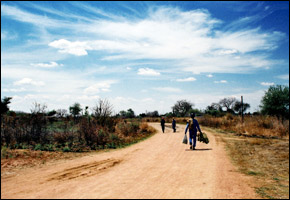

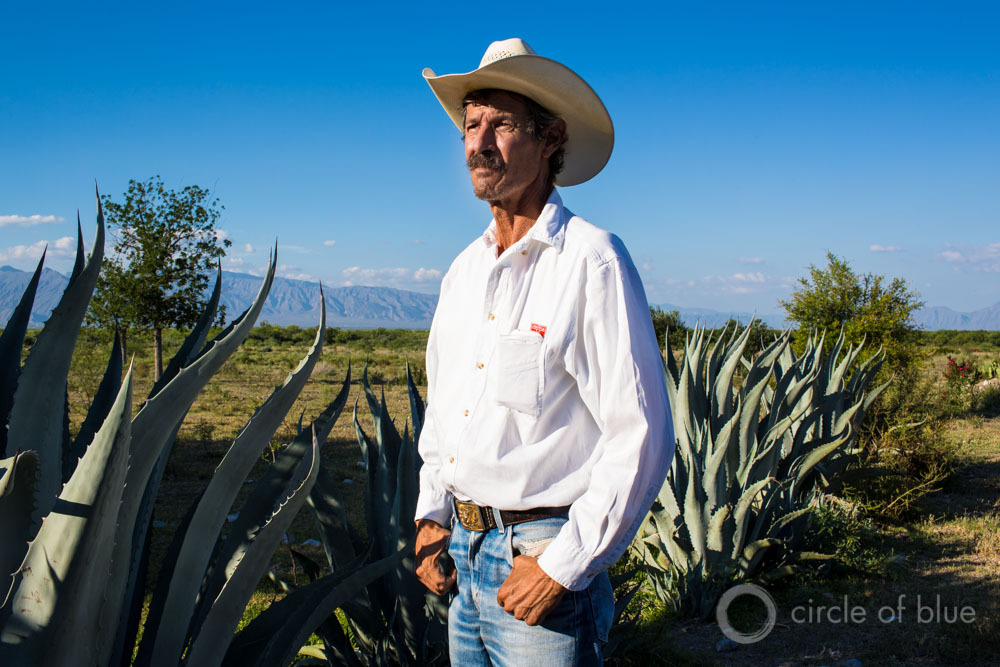
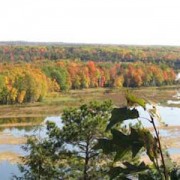


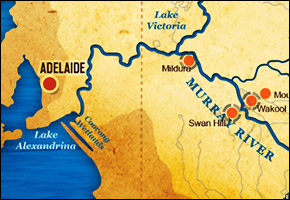
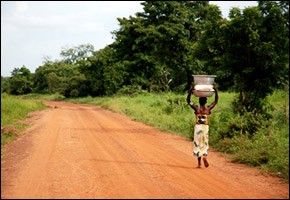
Leave a Reply
Want to join the discussion?Feel free to contribute!